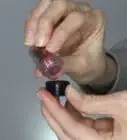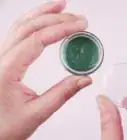This article was co-authored by Alicia D'Angelo. Alicia D'Angelo is a makeup artist based in New York City. She currently works for teams with Dior Makeup, YSL Beauty and Pat McGrath Labs as well as bridal companies Once Upon A Bride and Miss Harlequinn. Her work has been featured in Today.com, New York Live, Forbes.com, VH1, MTV, Vevo, Entertainment Weekly, Refinery 29, and NYXCosmetics.com. She has a Visual Communications degree from FIDM-Los Angeles.
There are 11 references cited in this article, which can be found at the bottom of the page.
This article has been viewed 20,599 times.
Loose eyeshadow is great for styling dramatic looks, and you can use it to create glitter styles and smokey eye looks. First, apply an eyeshadow primer, base color, and sticky base. Then, pat the eyeshadow onto your lids gently and gradually to build up your color. You can dampen your brush or use a mixing medium to create different effects. With a little practice, you can easily make shimmery, fabulous makeup looks.
Steps
Prepping Your Eyelids
-
1Apply an eyeshadow primer to the entirety of your eyelid. Squeeze a tiny dab of eyeshadow primer onto your fingers, and gently pat it over your eye. Rub it in slightly, then apply primer to your other eyelid. Primer helps your makeup stay on.
- Do this especially if you are using a base shade with your loose eyeshadow.
-
2Apply concealer or foundation before eyeshadow if you usually wear it. If you like to wear face makeup, it is best to apply it before you put on eyeshadow. It is also helpful to apply foundation over your eyelids after you apply primer. This sets your eyelids so they are ready for eyeshadow.[1]
- Foundation and concealer also helps your loose eyeshadow stick to your eyelids.
Advertisement -
3Use a base color if you want your loose eyeshadow to pop. For best results, use compact powder eyeshadow and a stiff, flat brush. A base color enhances your loose powder color and helps it adhere to your eyelid. In many cases, you can use a neutral base that matches your skin tone. This will help blend the loose shadow and create a softer look.[2]
- Use a white base color if you want your pigment to shine vibrantly. The color of your eyeshadow will closely resemble the color of the pigment in your container. To use, apply white to the entirety of your eyelid.[3]
- Use dark or black eyeshadow as a base if you want saturated, rich colors. The color of your shadow appears deeper and darker on a black background. You can apply a light color to the inside of your eye to create a highlight, then apply the dark shade to your crease. This is great for a sparkly, smokey eye, for instance.
- In addition, you can use translucent setting powder instead of eyeshadow color.
- For a fun pop, try sticking with one bold color choice, like pink, but place the tones from darkest to lightest so they're easier to blend. For instance, you might put mauve on your lid, a dusty rose in the crease, and a soft pink between the crease and your brow bone.[4]
-
4Dust a thick layer of loose powder under your eyes. Use a powder brush or a blending sponge to apply a thick layer of setting powder or translucent powder under your eyes. Once you are done with your eye makeup, you can dust away the loose powder along with any fallout from your eyeshadow.
- The loose powder will catch any loose shadow that may fall off during the application process.
Applying Basic Loose Eyeshadow
-
1Pour a small amount of loose eyeshadow into the lid of your container. You only need a small amount of pigment when applying loose eyeshadow. Place the lid of your container on a flat surface, and gently shake a small bit of eyeshadow onto the lid. You can also scoop a bit out with a small makeup brush, if that is more helpful.[5]
- This also prevents dunking your brush too far into your eyeshadow container and wasting your pigment.
- If you want to use a pressed powder as a loose powder to get a heavier application, you can scrap a bit of the top layer off into a lid or facial tissue an orange stick.
-
2Dip your brush into your lid and tap off any extra pigment. After you have pigment on your brush, gently tap it on the side of the lid to shake off any excess product. You can shake it back and forth slightly as well. This ensures you don’t apply too much eyeshadow. If you put on too much eyeshadow, you can get powder all over your face.[6]
- Use a flat, dense brush to apply your pigment with precision and accuracy.
- Use a small, fluffy brush for full lid coverage and easy blending.
- If you don’t have a makeup brush, you can use your finger or a cotton swab to apply your eyeshadow. However, brushes work best with loose eyeshadow application.
-
3Pat your brush onto your eyelid to gradually apply it in layers. To do this, gently dab your brush onto your eyelids. Start at the inner corner of your eye, and work your way towards the outer corner. Dip your brush back into your lid to pick up more product, and reapply your eyeshadow in thin layers until you create your desired look.[7]
- This prevents pigment from falling on your face.
-
4Hold a tissue under your lower lid if you want to catch loose eyeshadow. Powdering under your eye will take care of most fallout. If you are concerned about an excessive amount of fallout or you're new to loose shadow, though, you can fold a tissue in half. Hold the tissue under your eye with your non-dominant hand, and apply your loose eyeshadow with your dominant hand.[8]
- This way, the tissue can collect any eyeshadow as it falls.
Creating Different Looks
-
1Try a classic daytime look. If you want a simple look, you can start with a single color a shade or so darker than your skin tone. Use a soft eye brush to apply the product to your lid, then blend it upward into your crease and toward the browbone. To add a bit more depth to this look, use a fluffy brush to dab on a second color a few shades deeper than your first into your crease. Wipe off excess product from the brush, then blend the second shadow upward, fading it out toward the brow bone.[9]
- Give this look even more drama or take it from day to night by adding a third, dark shade to the outer quarter of your eyelid. Blend this up into the outer corner of your crease, and over toward the center of your eyelid. This third color should create a kind of blended v-shape along the outer corner of your eye.
- Different application styles and concentrations of color will have different effects on different eye shapes. Watch online tutorials, find inspiration photos, and don't be afraid to experiment to find what will work best on your eyes.
-
2Wet your brush before applying the pigment for a dramatic effect. Before you dip your brush into your loose eyeshadow, turn on your faucet and place your brush under running water for 1-3 seconds. You want to dampen your brush, not soak it. Then, dip your brush into the loose eyeshadow, and pat it across your eyelids. The little bit of water absorbs into your pigment, making it more saturated and vibrant.[10]
- If your brush is very wet, rub it back and forth against a towel to get rid of excess moisture.
-
3Create a foiled eyeshadow look if you want a sparkly, glamorous style. Purchase a mixing medium from a cosmetic store, and drip 1-2 drops of mixing medium into a small container. Dip your brush into the mixing medium, and spin your brush around to apply it all over. Then, place your brush into your loose eyeshadow or cosmetic glitter to apply it. This helps bind your pigment to your eyelid for highly saturated, sparkly looks.[11]
- If you don’t have mixing medium, you can also use makeup setting spray or saline eye drops.
- Do this if you want to use loose glitter as an eyeshadow. Make sure your glitter is cosmetic grade to avoid any cuts or medical problems.
- Apply your foiled shade after you apply your base shade of eyeshadow for best results.
- When you put on your eyeshadow, use short brush strokes so the pigment applies evenly.
-
4Blend together 2 contrasting shades if you want to create a smokey eye. To make a classic smokey eye, simply apply 1 light shade of eyeshadow to the inner corner and another darker shade to the outer corner for a multi-dimensional look. Use a small, round brush and circular motions to blend the shades together.[12]
- If you want to create a dramatic smokey eye, select a third darker shade and apply it to the crease and outer third of your eyelid. Then, blend all 3 together using small, circular movements.
-
5Use loose pigment on top of your lipstick to add depth and dimension. If you want to take your lip color to the next level, apply some loose eyeshadow! You can use a brush or your finger. Dab a small amount of eyeshadow at the center of your lips after you apply lipstick.
- This adds a bit of shine and color to your lip shade.
- Do this if you want to try a bold makeup style.
-
6Dust loose eyeshadow over your cheekbones for a opalescent effect. If you want to add a bit of shimmer to your look, dip a small powder brush into a sheer eyeshadow like a peach, lavender, or light blue, and gently pat your cheekbones with the brush. This is a great idea for a night out, like to a bar or a concert.
- This looks great if you have pale skin.
-
7Mix together loose pigment and nail polish to customize the polish color. Pour a quarter-size amount of clear nail polish in a small piece of aluminum foil, and sprinkle in your loose eyeshadow. You can use a tiny bit for a light accent color, or apply a little more for a vibrant color. Then, mix the pigment together using your polish applicator wand. Dip your wand into the color, and paint your nails.
- Wash your applicator after you finish painting your nails. You can use water to rinse away the pigment.
Community Q&A
-
QuestionHow do you apply eyeshadow wet?
 Laura MartinLaura Martin is a Licensed Cosmetologist in Georgia. She has been a hair stylist since 2007 and a cosmetology teacher since 2013.
Laura MartinLaura Martin is a Licensed Cosmetologist in Georgia. She has been a hair stylist since 2007 and a cosmetology teacher since 2013.
Licensed Cosmetologist Run the bristles of a shadow brush under water to dampen it slightly, then dip it into powdered eyeshadow. When you apply it to your lids you will get a more intense, pigmented result.
Run the bristles of a shadow brush under water to dampen it slightly, then dip it into powdered eyeshadow. When you apply it to your lids you will get a more intense, pigmented result. -
QuestionWhat do I do with loose pigment?
 Laura MartinLaura Martin is a Licensed Cosmetologist in Georgia. She has been a hair stylist since 2007 and a cosmetology teacher since 2013.
Laura MartinLaura Martin is a Licensed Cosmetologist in Georgia. She has been a hair stylist since 2007 and a cosmetology teacher since 2013.
Licensed Cosmetologist You can use it the same way you would use pressed pigment, to define and accent your eyes. Loose pigment will have a softer, less pigmented finish than pressed powder shadow.
You can use it the same way you would use pressed pigment, to define and accent your eyes. Loose pigment will have a softer, less pigmented finish than pressed powder shadow. -
QuestionWhat does it mean to foil eyeshadow?
 Laura MartinLaura Martin is a Licensed Cosmetologist in Georgia. She has been a hair stylist since 2007 and a cosmetology teacher since 2013.
Laura MartinLaura Martin is a Licensed Cosmetologist in Georgia. She has been a hair stylist since 2007 and a cosmetology teacher since 2013.
Licensed Cosmetologist Foiling means mixing your eyeshadow with a setting spray. It makes your eyeshadow last longer.
Foiling means mixing your eyeshadow with a setting spray. It makes your eyeshadow last longer.
Warnings
- If you have dry skin, apply moisturizer to your eyelids before you apply loose eyeshadow. This type of eyeshadow can dry out your skin and enhance the appearance of wrinkles.⧼thumbs_response⧽
References
- ↑ https://youtu.be/tk99VbXXplo?t=1m36s
- ↑ https://youtu.be/tk99VbXXplo?t=1m41s
- ↑ https://glowsly.com/sparkly-glitter-eyeshadows/
- ↑ Alicia D'Angelo. Makeup Artist & Hair Stylist. Expert Interview. 7 April 2020.
- ↑ https://youtu.be/B7kzaC4Qr34?t=3m52s
- ↑ https://youtu.be/B7kzaC4Qr34?t=3m52s
- ↑ https://youtu.be/JZ4kCLlBke0?t=27s
- ↑ https://glowsly.com/sparkly-glitter-eyeshadows/
- ↑ https://kjbennett.com/basic-eyeshadow-application/

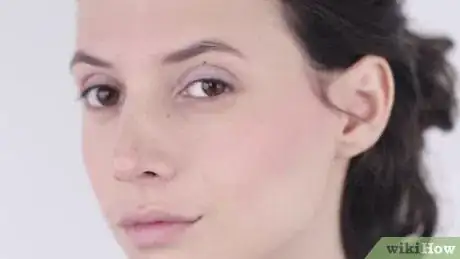
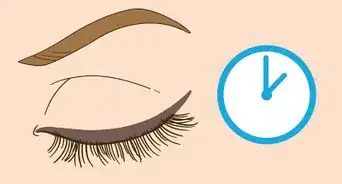


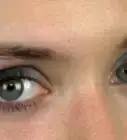
-Step-20.webp)
